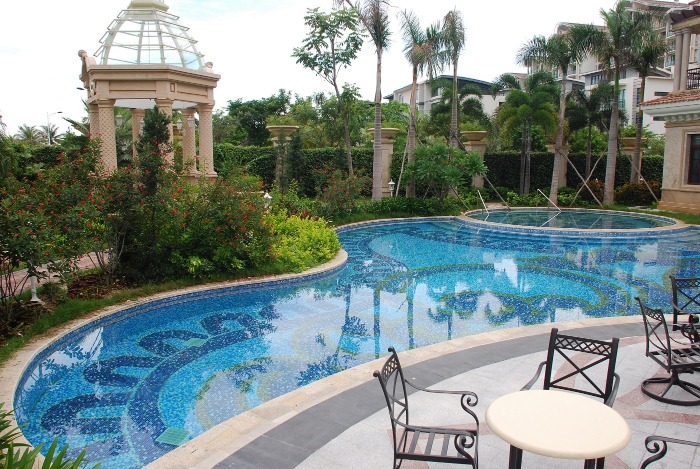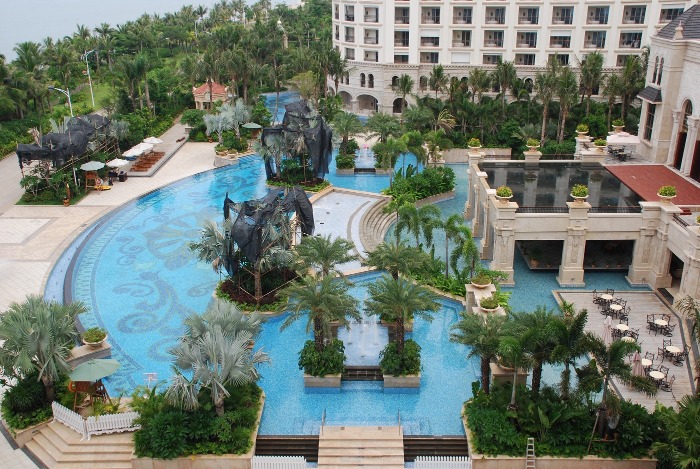Those who have followed us for some time, know that mosaics can be applied on nearly any kind of surface. Our tiles are often used in parts of the interior, but did you know that some of our mosaics are also suitable for cladding swimming pools? They actually finish up the inside of concrete pools very nicely. In this blog you will therefore read anything there is to know about processing our mosaics in swimming pools!

Suitable mosaics
Not all mosaics can be used on the inside of swimming pools. First, the tiles will be dealing with chlorine and a lot of water pressure. The used mosaics therefore must be strong and chemical resistant. Second, swimming pools often have curves, for example where the walls transition into the floor. The mosaics should therefore be suitable for tiling curved surfaces.
If we apply the above-mentioned criteria to our own collection, the Valencia and Metal mosaics are eliminated. The bigger tiles, like the kitkat mosaics, are not very suitable either. The best options are the Amsterdam, Barcelona, and London mosaics, since these tiles are strong enough and, thanks to their small size, suitable for tiling curved surfaces.
Custom designs
We also supply bespoke patterns of mosaics. The client then comes up with a design, which we process into sheets with mosaics. Since we often use the same collections for this as we do for swimming pools, we can also supply any kind of bespoke patterns for pools.
A custom design adds an exclusive and luxurious detail to the pool. Nearly anything is possible: from figures and drawings to numbers and letters. A custom design does require some extra attention when processing the mosaics, but the order comes with a clear and complete key plan for the tiler.


Processing the mosaics
Processing mosaics in pools is like processing them in for example bathrooms or kitchens, but it does ask for some additional preparation. In addition, some other products are required, like an epoxy adhesive and grout.
- Cure the concrete
Mosaics are dimensionally stable, so the concrete of the pool must be too. It is therefore important the concrete has cured well, preferably for at least three months. If the concrete has not completely hardened, it can contract and thus lead to tension. This can cause the mosaics to break or let loose. - Get rid of cracks and irregularities
Mosaics are processed best on sleek surfaces. It is therefore important the concrete is as flat as possible and thus any cracks or irregularities are filled in or removed. We advise against using an extra layer of tile adhesive for this, since layers that are too thick, can shrink. - Use the right adhesive and grout
Not just the mosaics, but also the adhesive and grout are exposed to water and chlorine. The used products must therefore be resistant to these circumstances. Eurocol for example has several adhesives and grouts that are suitable for use in swimming pools, like the 703 adhesive and spout expoxy.
If you have any questions regarding the use of mosaics in swimming pools, please feel free to contact us for advice!
